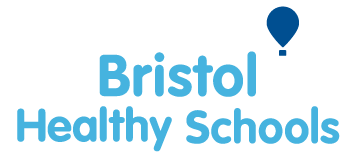Information, guidance and resources for schools on preventing and addressing domestic violence and abuse.
For resources, see the Bristol ideal award guidance document.
Domestic abuse
Anyone can be a victim of abuse regardless of age, race, income, religion, belief, sex, disability, culture or sexual orientation.
Domestic abuse can happen in couple relationships and between family members. Abuse can be psychological, physical, financial or emotional.
It can include:
- domestic abuse
- domestic violence
- control, for example, not being allowed to go where you want, when you want.
- coercion, for example, being forced to do things you don’t want to do
- female genital mutilation (FGM)
- forced marriage
- human trafficking and modern-day slavery
- sex work or prostitution
- sexual violence (any unwanted sexual act or activity)
- sexual harassment
How domestic abuse affects children and young people
Since the introduction of the Domestic Abuse Act 2021, a child who sees or hears, or experiences the effects of, domestic abuse is also regarded as a victim of domestic abuse.
It can be difficult to tell if domestic abuse is happening and those carrying out the abuse can act very different when other people are around. Children and young people might also feel frightened and confused, keeping the abuse to themselves.
The NSPCC notes the following signs that a child has experienced domestic abuse can include:
- aggression or bullying
- anti-social behaviour, like vandalism
- anxiety, depression or suicidal thoughts
- attention seeking
- bed-wetting, nightmares or insomnia
- constant or regular sickness, like colds, headaches and mouth ulcers
- drug or alcohol use
- eating disorders
- problems in school or trouble learning
- tantrums
- withdrawal
Young people can also become involved in their own relationships, that are abusive as well as be exposed to domestic abuse within the family home.
Both experiences can cause long-lasting physical, behavioural, and mental health problem and increased risk of experiencing or perpetrating abuse within their own adult relationships.
Protecting children from abuse can disrupt children’s social lives in ways that may not be appreciated by adults. For example, moving to safety can result in loss of contact with friends, family members, school and familiar surroundings.
If a child reveals abuse:
- listen carefully to what they're saying
- let them know they've done the right thing by telling you
- tell them it's not their fault
- say you'll take them seriously
- don't confront the alleged abuser
- explain what you'll do next
- report what the child has told you as soon as possible
Report concern about a child, either
- online at Make a referral to First Response for professionals or
- call First Response on 0117 903 6444
For more information on domestic abuse in Bristol, see our pdf Joint Strategic Needs Assessment Profile(389 KB) .
How sexual violence and abuse affects children and young people
Rape crisis defines sexual violence as any kind of unwanted sexual act or activity, including rape, sexual assault, sexual abuse, and many others.
For more information on:
- child sexual abuse, please see the Keeping Bristol Safe website
- sexual violence in Bristol please see our pdf Joint Strategic Needs Assessment Profile(319 KB) .
Children and young people typically display a range of sexualised behaviours as they grow up. However, some may display problematic or abusive sexualised behaviour. This is harmful to the children who display it as well as the people it's directed towards.
Children and young people who abuse others should be held responsible for their abusive behaviour, whilst being identified and responded to in a way that meets their needs as well as protecting others.
They are likely to be children in need and some will, in addition, be suffering, or be at risk of, significant harm and may themselves be in need of protection.
Report concern about a child, either
- online at Make a referral to First Response for professionals or
- call First Response on 0117 903 6444
See the Keeping Bristol Safe Partnership Harmful Sexual Behaviour Guidance for more information.
Support
Domestic abuse and sexual violence support for Bristol residents can be found on Keeping Bristol Safe Partnership website.
